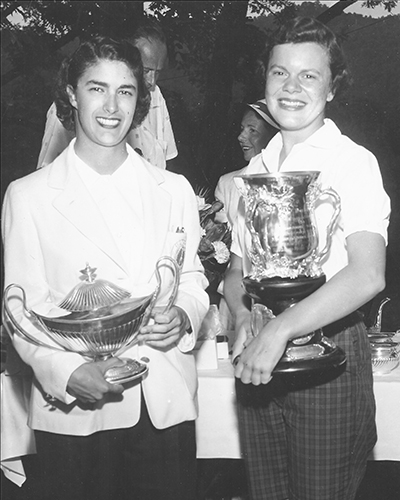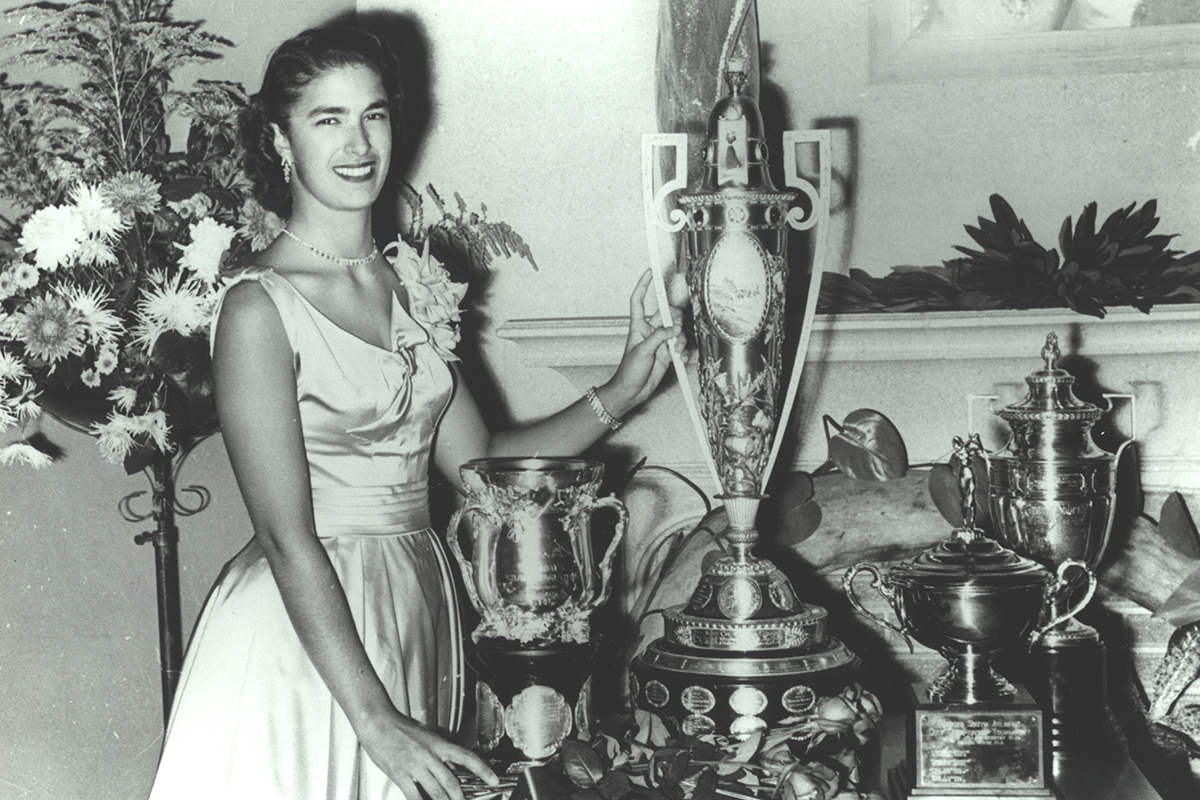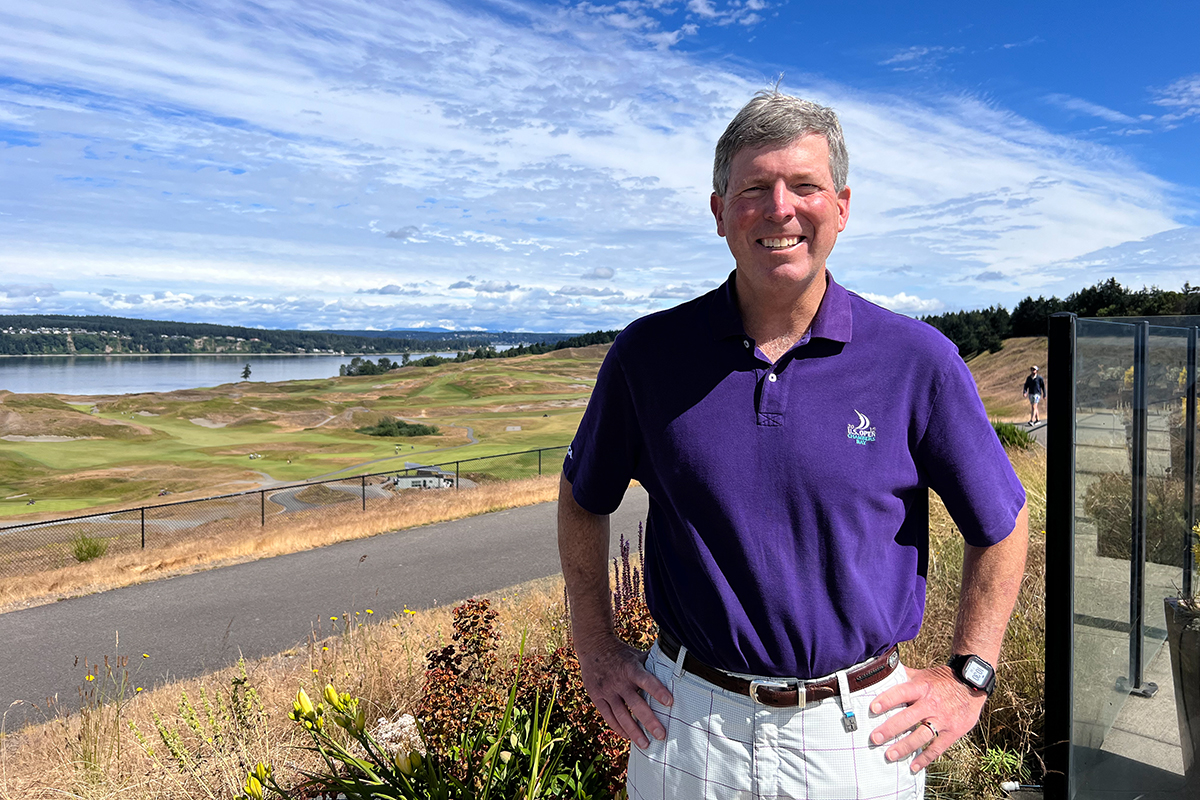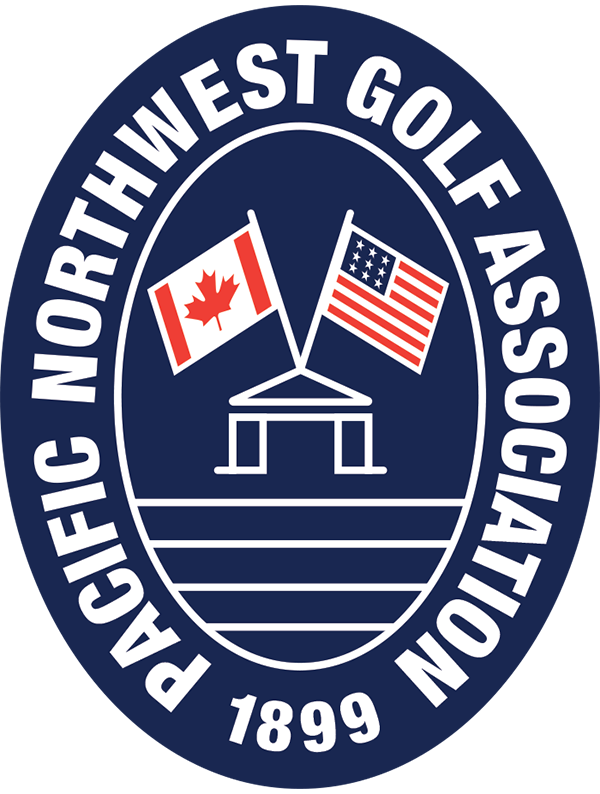Sander and Harbottle a reminder of local legacy of U.S. Women’s Amateur
by Tom Cade, Editor
The 2022 U.S. Women’s Amateur will be held at Chambers Bay in University Place, Wash. on August 8-14. First conducted in 1895, this will be the 122nd playing of this national championship. It will be the 10th time that it will be held in the Pacific Northwest, and the first time since 1984 that it’s been held in Washington, when it was conducted at Broadmoor Golf Club.
It is the third-oldest golf championship in the U.S., with its inaugural playing in 1895 held one month after the first U.S. Amateur and 30 days after the first U.S. Open.
It is, in other words, a big deal.
And what makes it an even bigger deal for those of us who live – and play golf – in the beautiful Pacific Northwest, is the history of utter dominance which our local players have demonstrated in this championship over the years.

Beginning in 1955, there was a 13-year period during which there were only two years when a Washington golfer was not in the final match (and sometimes two Washington golfers competing against each other in the final match) of the U.S. Women’s Amateur Championship:
- 1955 Patricia (Lesser) Harbottle – Champion
- 1956 JoAnne (Gunderson) Carner – Finalist
- 1957 JoAnne (Gunderson) Carner – Champion
- 1958 Anne (Quast) Sander – Champion
- 1960 JoAnne (Gunderson) Carner – Champion
- 1961 Anne (Quast) Sander – Champion
- 1962 JoAnne (Gunderson) Carner – Champion
- 1963 Anne (Quast) Sander – Champion; Peggy Conley – Finalist
- 1964 JoAnne (Gunderson) Carner – Finalist
- 1965 Anne (Quast) Sander – Finalist
- 1966 JoAnne (Gunderson) Carner – Champion
- 1968 JoAnne (Gunderson) Carner – Champion; Anne (Quast) Sander – Finalist
How to explain this? Was there something in the rain? In the isolation of this upper-left corner of the country? Some lucky charm hidden away in the meadows below Mount Rainier?
At the media day on July 7 for this year’s U.S. Women’s Amateur, held in the pavilion overlooking the expanse of Chambers Bay down below, two of these local champions (and local legends) – Patricia Harbottle and Anne Sander – were on hand to offer some insight during the press conference.
“In those days, as kids we’d show up at a local tournament for girls, and there’d only be six or seven of us,” Sander said. “It would be me, Pat, Ruth Jessen, Gundy, Edean and a few others. We didn’t know any better – we thought all the women players everywhere played like this.”
No, not quite.
None of them understood at the time what an unusual constellation of talent they were, in one small area.

Sander would win three U.S. Women’s Amateur titles (1958, 1961, 1963), and she says she remembers her 1961 title the most. It was held that year at Tacoma Country and Golf Club. “I was teaching school at the time, and I figured I’d better go play in something beforehand (to get my game in shape),” she said to the media day audience. “So I played in the PNGA Women’s Amateur at Glendale (Country Club in Bellevue, Wash.), and I lost in the second round, 5 and 4. And I thought, ‘Oh, dear.’ So I really went to work on my game, and went to stay with a friend in Los Angeles to practice, and while there I played in the Women’s Western Amateur, which I was medalist and also won, and it inspired me to play well in the 1961 U.S. Women’s Amateur, and I played the golf of my life there.”
Their achievements still echo throughout the Cascade Mountains and rolling Palouse hills prairies in our region. Sander would eventually win numerous titles, including seven USGA national championships, the 1980 British Women’s Amateur, was named to seven Curtis Cup teams, and inducted into the Pacific Northwest Golf Hall of Fame in 1999.
Ruth Jessen would win two PNGA Women’s Amateur titles, 11 titles on the LPGA Tour, and finish second twice in the U.S. Women’s Open (1962, 1964). She was inducted into the Pacific Northwest Golf Hall of Fame in 2017.
Along with the 1955 U.S. Women’s Amateur title, Patricia Harbottle won three PNGA Women’s Amateur titles (1952, 1953, 1965), starred on the men’s golf team at Seattle University, and was inducted into the Pacific Northwest Golf Hall of Fame in 1985.
Before moving to Seattle, Edean Ihlanfeldt won six consecutive Montana State Women’s Amateur titles. She would go on to win five PNGA Women’s Amateurs and three Senior Women’s Amateurs, and four Washington State Women’s Golf Association state titles. She would win two national titles – the 1952 Canadian Women’s Amateur and the 1982 U.S. Senior Women’s Amateur. In 1975, she founded the women’s golf program at the University of Washington, declining to take a salary, instead preferring the money be directed back into the program. She was inducted into the Pacific Northwest Golf Hall of Fame in 1985.

JoAnne (Gunderson) Carner won five U.S. Women’s Amateurs, the 1956 U.S. Girls’ Junior and three PNGA titles, among others. She would go on to win 43 titles on the LPGA Tour, including the 1985 Safeco Classic at Kent’s Meridian Valley Country Club, as well as two U.S. Women’s Opens. She was inducted into the World Golf Hall of Fame in 1982, and the Pacific Northwest Golf Hall of Fame in 1999.
If you want to watch a little history, follow the players as they walk the Chambers Bay fairways during the U.S. Women’s Amateur in August, and understand they are inheriting, and promoting, the great legacy left to this championship by some of the finest women golfers this region has ever produced.
In creating Chambers Bay, the design firm of Robert Trent Jones II wanted to make it a physical test. “We specifically designed holes on both the front and back nine on which players would have to climb uphill,” said Bruce Charlton, president chief design officer of RTJ2, to the gathered media. “So we wanted a player’s ability to persevere through the physical challenges to be an important thing to the overall score.”

The second thing the designers wanted to do in creating the course was to make players have to make choices. “We wanted players to have to make decisions about how to play shots and how to play holes,” Charlton said. “We think that brings shot-making and the better thinkers in the game to the forefront, and I love the fact that there’s a lot of thinking that goes into match play, especially on this golf course.”
Let’s see how this golf course can bring out the talent, and the champion, from among the 156 players who will tee it up in this year’s U.S. Women’s Amateur.
Want to volunteer for the 2022 U.S. Women’s Amateur? Click here for information.





